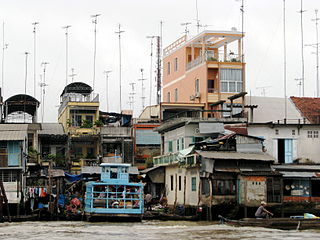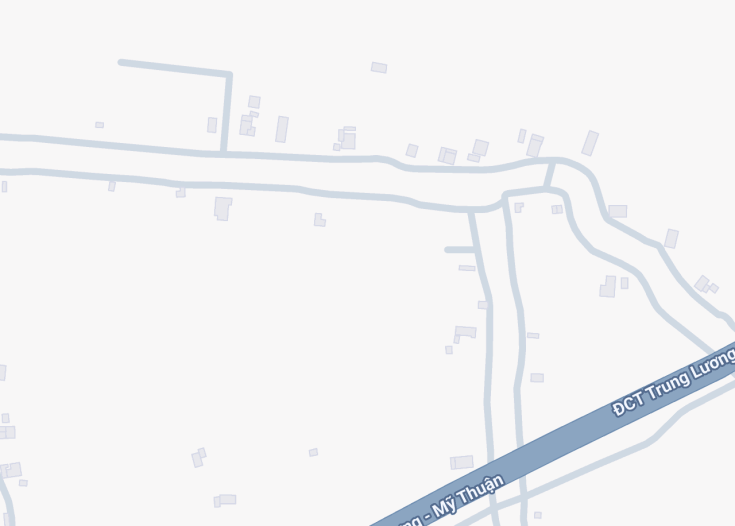Located in the heart of the Mekong Delta, Cai Be is most famous for its floating market, where boats brim with fruits, vegetables, and lively local traders every day. This picturesque town offers an authentic glimpse into rural Vietnamese culture with its rich agricultural landscapes and traditional riverine lifestyle.
Cai Be’s charm also lies in its old French colonial houses, ancient churches, and craft villages, making it a captivating destination for culture seekers and history enthusiasts alike.
Visit the floating market early in the morning for the freshest produce and a more authentic experience without the crowds.
Consider exploring the surrounding small islets by a guided boat tour to fully appreciate the natural beauty and tranquility of the Mekong Delta.
Cai Be: A Glimpse into Vietnam’s Verdant Delta
| Country | Vietnam |
| Time in Cai Be | GMT+7 |
| Language spoken | Vietnamese |
| Population | 292,000 (World Urbanization Prospects 2022) |
| Currency | Vietnamese Dong (VND ₫) |
| Airports |
|
Cai Be, nestled in the heart of Vietnam’s Mekong Delta, is a captivating region known for its lush landscapes, floating markets, and rich agricultural produce. Historically, Cai Be has been a vital commercial hub, particularly during the times when waterways were the main means of transport. Today, it retains its historical charm and continues to draw both domestic and international tourists, intrigued by its unique waterborne way of life and vibrant local culture.
The town is particularly famous for its floating market, which springs to life each morning at dawn. Local sellers congregate on the murky river waters, their boats brimming with regional fruits, vegetables, and handcrafted goods. This daily gathering is not only a trading place but also a crucial social bonding venue, reflecting the deeply communal nature of the Vietnamese rural lifestyle.
Aside from the floating market, Cai Be’s rural setting is dotted with traditional Vietnamese homes, fruit orchards, and cottage industries. Visitors often take the opportunity to explore these areas by bike or by sampan rides along the river, gaining an up-close perspective of life in the Delta. The region’s rich soil and abundant water supply make it an ideal location for cultivating a variety of fruits like mangoes, papayas, and particularly the longans for which the area is famed.
The local cuisine in Cai Be is equally noteworthy, with a focus on fresh and simple ingredients that mirror the town’s agrarian roots. Dishes such as ‘elephant ear fish’ and ‘banh xeo’ (sizzling pancake) made with locally sourced produce exemplify the region’s culinary offerings.
Where is Cai Be?
Cai Be is located in the Tien Giang province in southern Vietnam, part of the greater Mekong Delta region.
Distances:
| Route | Distance by car | Time by car |
|---|---|---|
| Ho Chi Minh City to Cai Be | 68 miles (110 km) | Approx. 2 hours |
| Can Tho to Cai Be | 53 miles (85 km) | Approx. 1.5 hours |
What is Cai Be famous for?
Cai Be is renowned for its vibrant floating markets and lush orchards, showcasing an authentic side of Vietnamese river culture and its agrarian-based economy.
History
Pre-Colonial Era
Cai Be, situated along the mighty Mekong River in Vietnam, has been a vibrant locale since ancient times. Archaeological evidence suggests early settlement activity from indigenous groups skilled in river-based trade and agriculture. Strategic geographical features nurtured a thriving community well-versed in the dynamics of river commerce and fishing.
1800s – Colonial Influence
During the 19th century, as Vietnam fell under French colonial rule, Cai Be witnessed significant transformations. The French exploited its location and resources, establishing robust trade routes that linked Cai Be with larger markets both domestically and across Southeast Asia. This era also saw the introduction of Roman Catholicism, significantly influencing local culture and architecture as evidenced by the still-standing Cai Be Cathedral.
20th Century – Wars and Reconstruction
The 20th century was tumultuous for Cai Be. The region played roles during the Indochina Wars and later the Vietnam War, leading to social strife and economic disruptions. Following Vietnam’s reunification in 1975, Cai Be, like much of the country, embarked on a path of recovery and rebuilding. Agricultural reforms in the 1980s boosted the local economy, particularly benefiting the rice and fruit crops sectors.
21st Century – Tourism and Modern Development
Entering the 21st century, Cai Be pivoted towards tourism, recognizing the potential of its natural and historical assets. Efforts were made to preserve its rich cultural heritage while welcoming modernity. Today, Cai Be is appreciated not only for its historical significance but also for its role in showcasing the vibrant life along the Mekong Delta to the world.
Visit Cai Be
What to see and do in Cai Be, Vietnam
Exploring Cai Be is a journey through both time and culture. Notable attractions include the Cai Be Floating Market, where visitors can witness the bustling trade of goods and produce on boats. The historic Cai Be Cathedral offers insights into the colonial past of the region.
For a taste of local life, touring the surrounding fruit orchards and rice fields provides a rural escape, displaying the agricultural prowess of the area.
- Cai Be Floating Market
- Cai Be Cathedral
- Local orchards and rice paddies tours
Festivals and Events in Cai Be
Seasonally, Cai Be celebrates traditional Vietnamese holidays with great enthusiasm, such as Tet (Vietnamese New Year) and the Mid-Autumn Festival. These events offer immersive experiences with special performances, traditional foods, and a display of local customs, generally occurring from January to February and around September.
Best time to visit Cai Be
The best time to visit Cai Be is during the dry season from December to April. During these months, the weather is cooler and less humid, making it ideal for exploring the outdoor markets and engaging with the river communities.
Is Cai Be worth visiting?
Cai Be is definitely worth visiting for those intrigued by Vietnam’s rich history and vibrant local cultures. Its unique blend of historical landmarks, bustling floating markets, and lush agricultural landscapes provides a comprehensive glimpse into life along the Mekong Delta.
Whether you’re a history buff, cultural enthusiast, or nature lover, Cai Be offers a diverse array of experiences that cater to many interests. The warmth and hospitality of its residents further enrich any visit, making Cai Be a memorable destination on any Vietnam travel itinerary.









